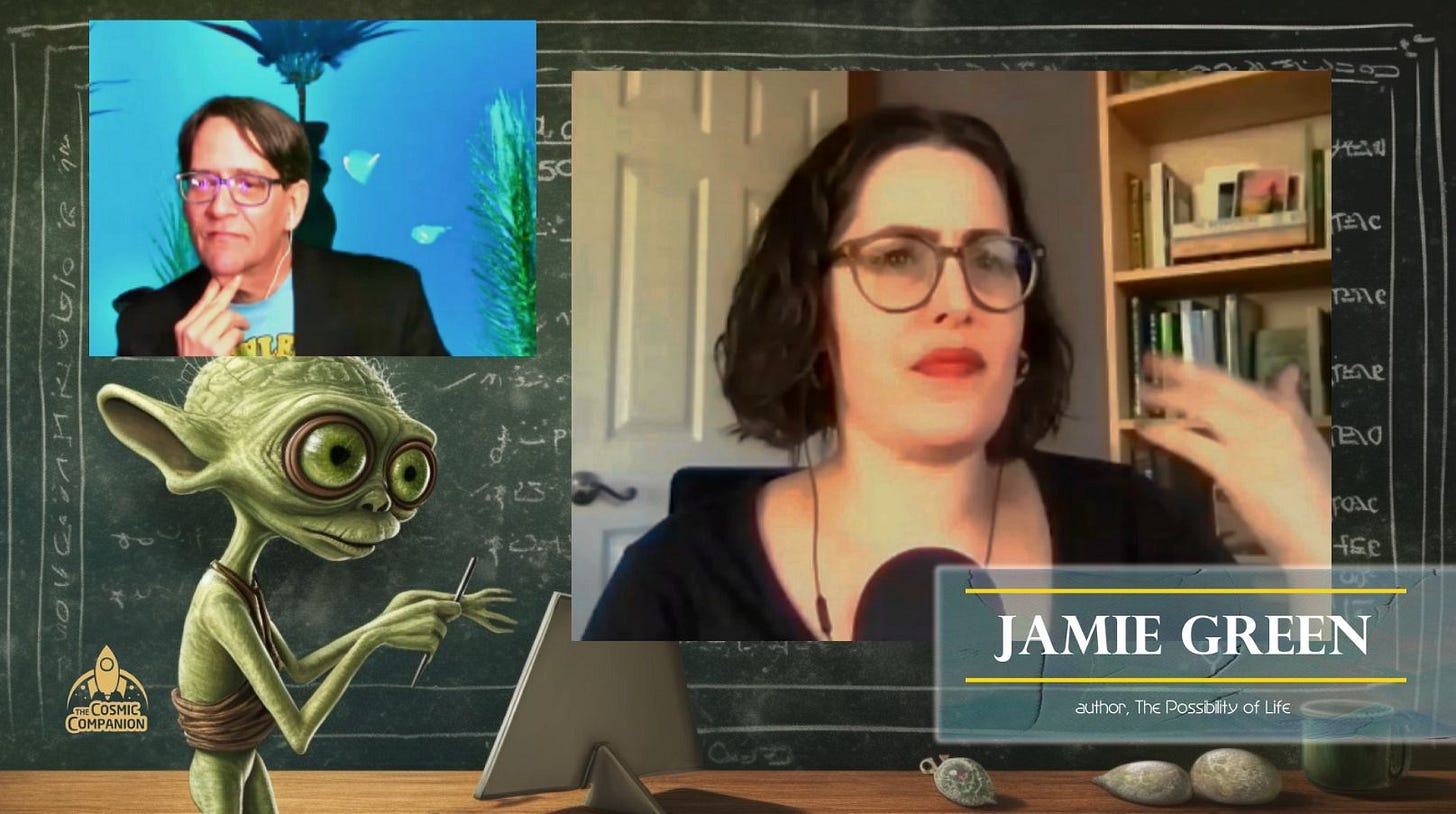Hello everyone!
This week, we are looking at How to Cook Up Life on a Planet. Later in the show, we will be talking with Jaimie Green, author of the new book, The Possibility of Life.
So, how does life form on a new planet? Chemicals and energy. That’s how. You know what else you can do with chemicals and energy? Cook food, that’s what!
(Excuse me a minute while I put on this chef’s hat)
Listen to the podcast here, or watch this episode as a video!
If you are looking to cook up life on an early-career planet, here’s what you’ll need for this recipe:
An abundance of amino acids
Some supply of sugars
A quantity of nucleotides
At least a Little Lipids
Water and
energy
First, let’s talk about amino acids. These guys are the building blocks of proteins, which are essential for life as we know it.
Vegetarian sources of amino acids include nuts, berries, beans, almonds, mint, or…
[look around]
oranges. Kind of like these tangerines right here. Look, we’re letting this sit in for primitive amino acids, let the orange thing slide. OK?
The first amino acids may have formed through a process called “abiogenesis,” where simple organic compounds combine and react along with energy, such as lightning strikes or ultraviolet radiation from the sun. The molecules and structures within foods can change radically when they cook.
[ <<< Those changes are pretty much the whole reason we cook.]
(exactly!)
Next up, we have sugars. These are vital for providing energy to cells and making up the structure of DNA and RNA. Laboratory experiments reveal that simple sugars can form from basic organic compounds.
Here, we are going to have sugars represented by… well, sugar. In this case, cane sugar. The 95% of this which is actually sugar is a disaccharide, made up from glucose and fructose.
[sweeeeeeetttt…]
Nucleotides are another essential component of life, making up the building blocks of DNA and RNA. You remember — the whole A, T, C, G and sometimes U thing from high school bio...
Researchers have found that nucleotides can form from meteorites, suggesting that they may have been delivered to Earth by comets and asteroids.
These bits of genetic code can be found in nearly every bit of anything we call food. So, let’s throw in some cherries.
Then, we have lipids. These are typically fatty or waxy substances. A little bit of butter will do nicely.
Lipids are important for making up the membranes that surround cells and maintain their structure. Lipids can form spontaneously in water, and they may have arisen in the early oceans of the Earth.
Some primitive lifeforms called extremophiles thrive on minerals from seafloor vents, which we will represent with a dash of salt.
Mix all of these ingredients together with some water, and you have the basic chemical building blocks of life.
But, just like most recipes, life needs energy and time to come to fruition. Or, in this case, FRUITition. See what I did there?
While our primitive planet has a hot time for a while, we welcome Jaime Green to the show, talking about her new book, The Possibility of Life.
So where can your planet get its ingredients? Surprisingly, many of them are delivered, at least in part, right to your planet’s door.
Comets and asteroids are loaded with all sorts of organic compounds, including amino acids, sugars, nucleotides, and lipids.
Look for a planet with liquid water, preferably in the “Goldilocks zone” where it’s not too hot and not too cold. You want your ingredients to stir and mix. That’s tough with ice or steam.
[ <<< Not too hot and not too cold? That sounds like liquid water is JUST RIGHT for life!]]
Now it’s time to mix everything together. Just stir our organic compounds into the water and add heat. Kind of like putting it into an air fryer for a few minutes, stirring occasionally.
And… let nature do the rest. With a dash of luck, life should start to form in no time.
Life thrives in even the most extreme environments on Earth, like the frozen desert of Antarctica (represented here with some ice cream).
[Life will.. find a way]
We’re dealing with a lot of unknowns here, and there’s no way to be sure of our final result. But that’s part of what makes the recipe for life so exciting, folks! It’s a bit like home cooking — we never quite know what we’re going to get.
Mmmm…. Delicious!
Next week on The Cosmic Companion, we will be talking about Surviving Extinction. We will be joined by Nat Geo’s Kathryn Williams, talking about National Geographics new work, Weird but True: Sharks! Make sure to join us starting on 20 May.
Check out our other episodes at TheCosmicCompanion.com. While you’re there, sign up for our newsletter and never miss an episode.
If you enjoyed this episode of the show, please comment, follow, share, and tell your friends about the show. You know, when you invite them over for some delicious ancient life a la mode.
Clear skies!
James













Share this post